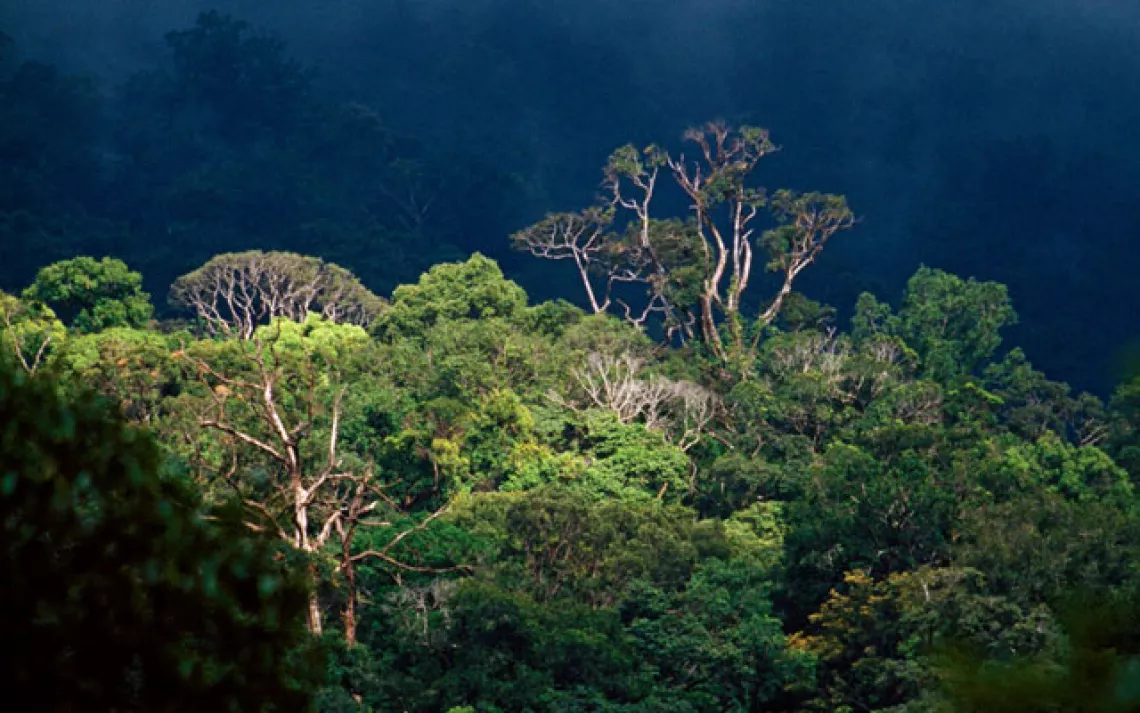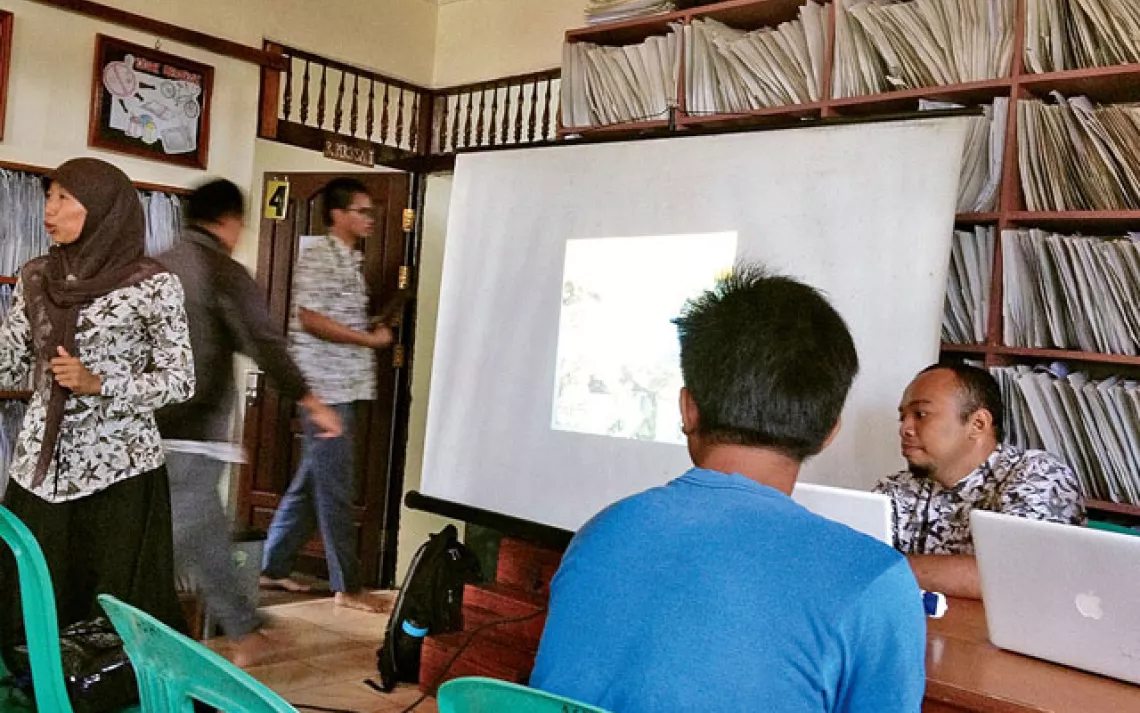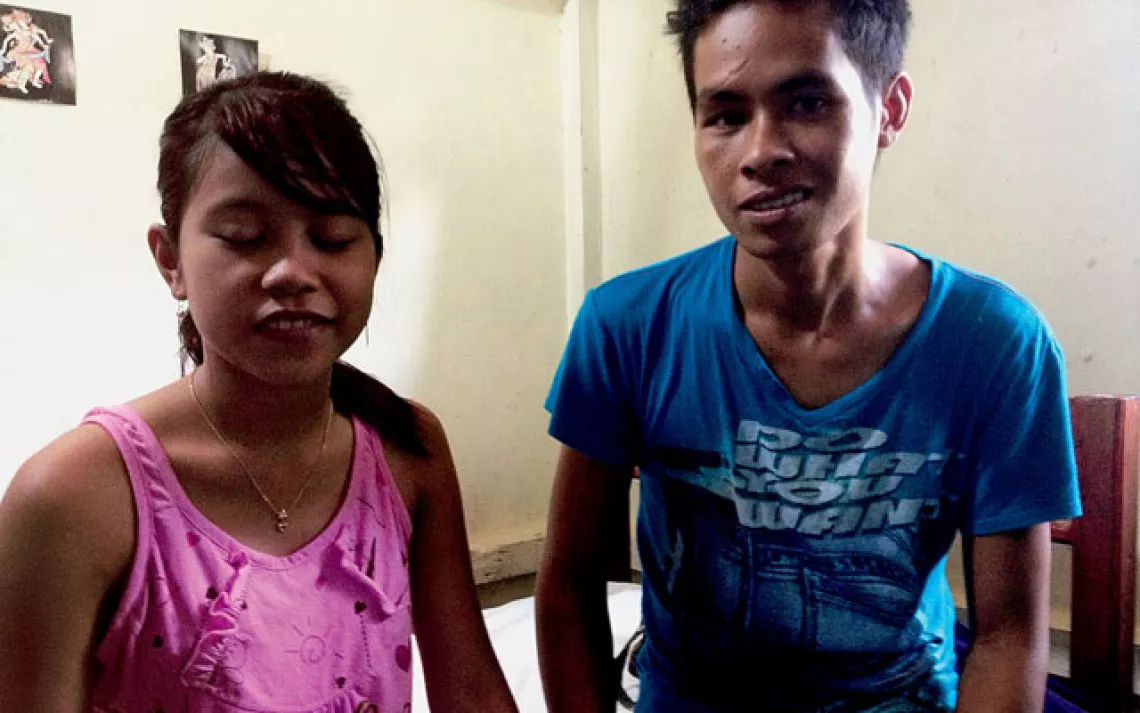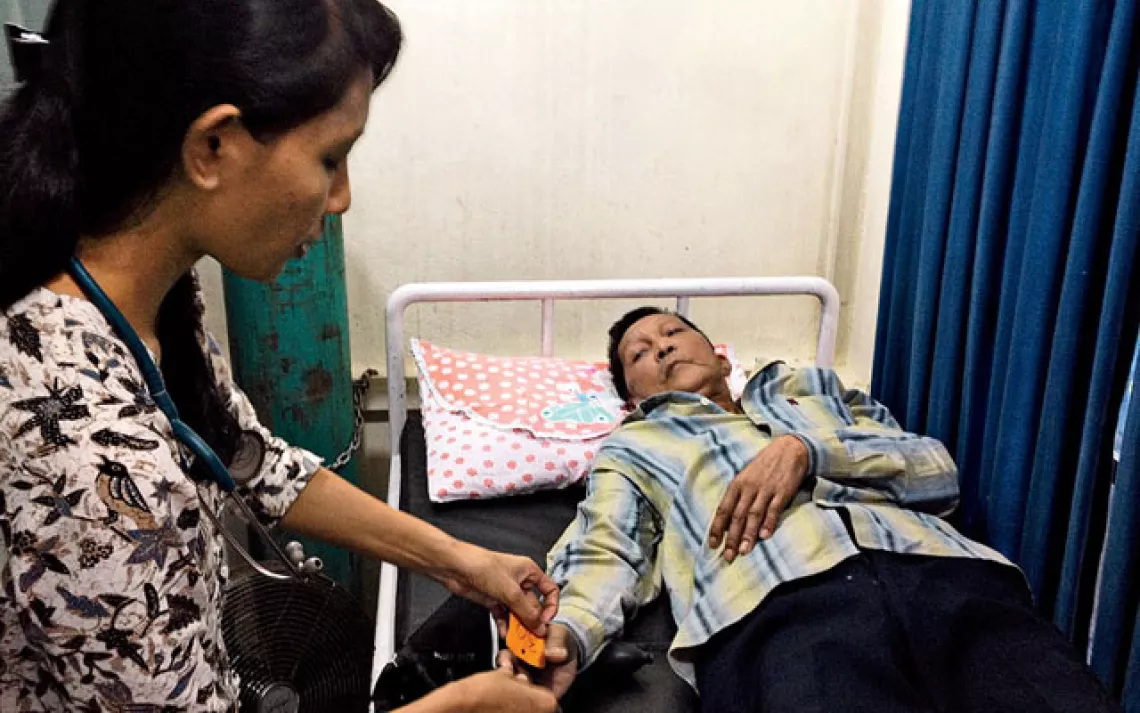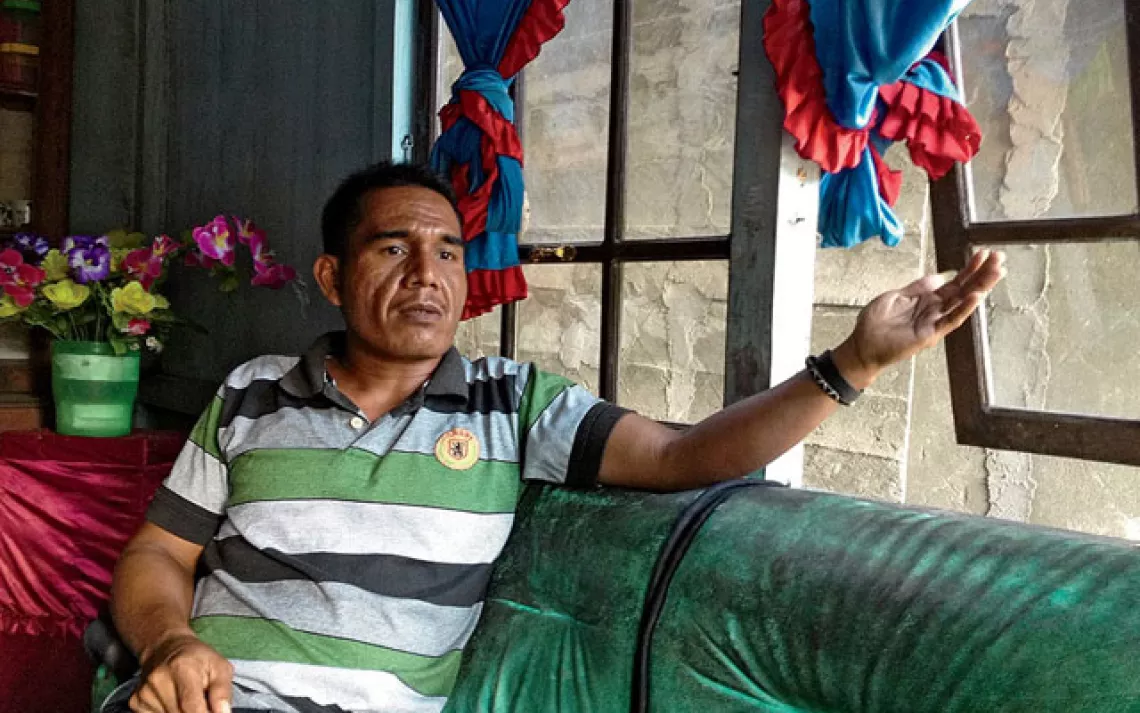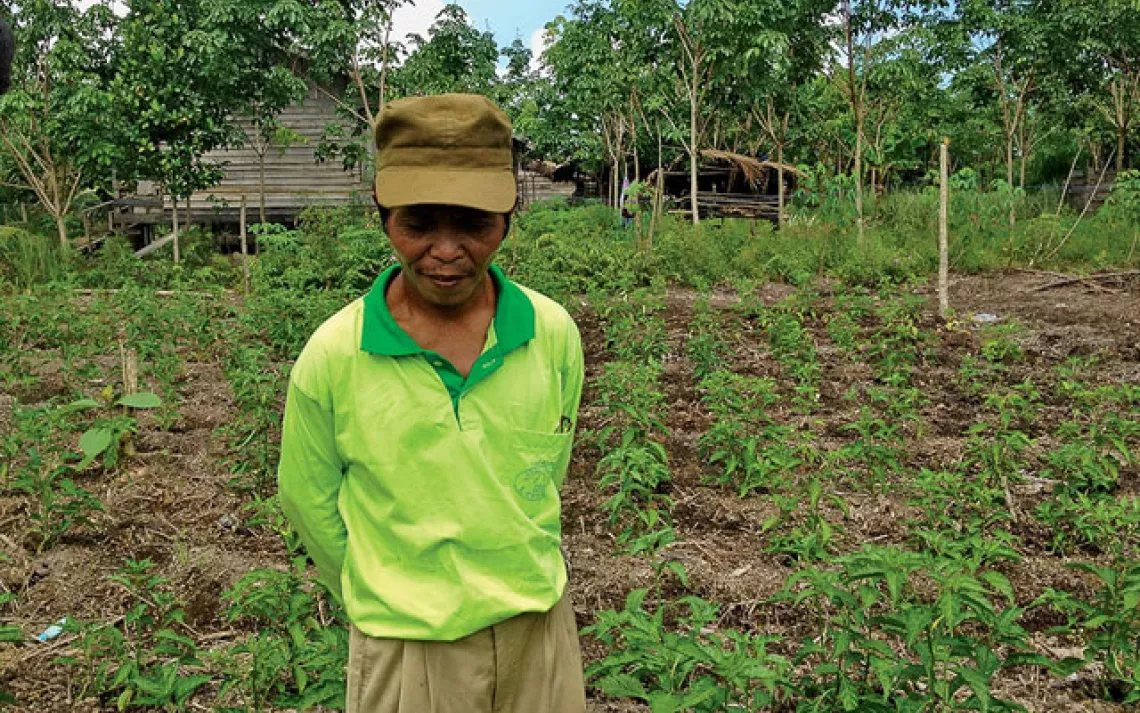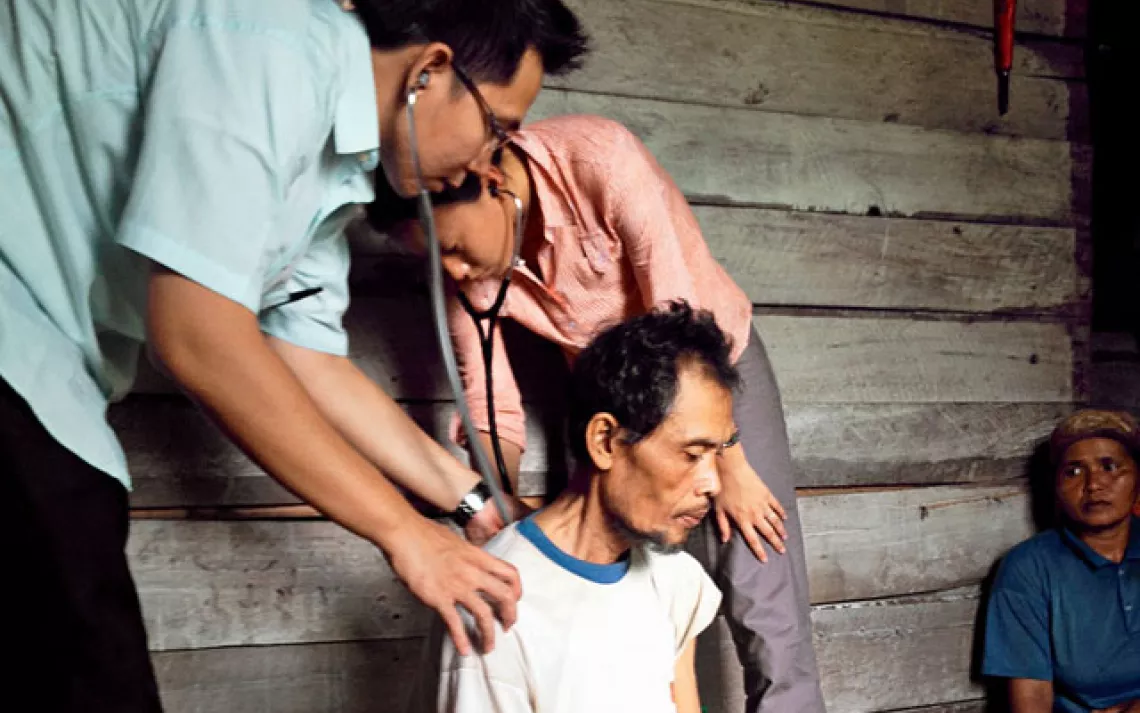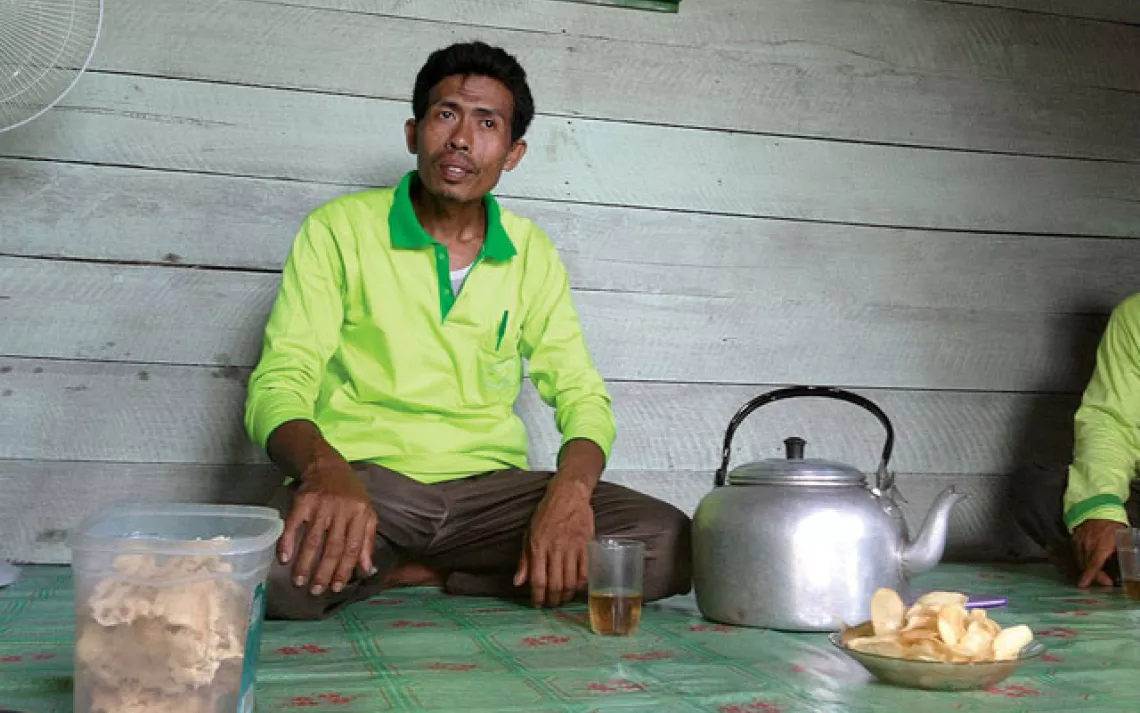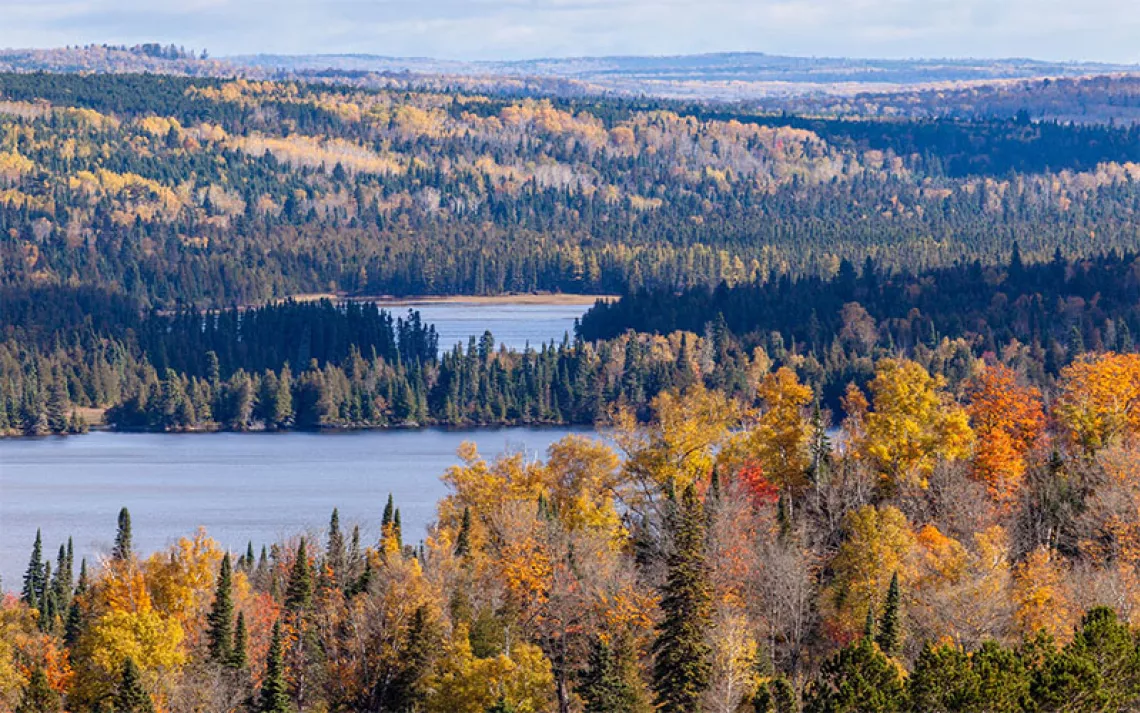Resuscitating the Rainforest
Indonesian doctors show that stethoscopes might be the best defense against chainsaws
The patient, Yanti, is 19 but looks far younger. Her capri-clad legs dangle off the exam bed. Her slight arms are softened by baby fat, and her eyes, round and enormous, gaze out over nothing. At her side sits her husband of three months, Antonius, a gangly teenager with blades of gelled hair and a T-shirt that says DO WHAT YOU WANT. The pain in her head is more intense than any she has ever felt, and her eyes are suddenly failing--she can see only blurred colors.
Dr. William Wahono, 27, broad-headed, and known to patients as Dr. Willy, presses the sides of her neck, which causes her to wince. When he tries to coax her chin downward, she bends at the waist instead, leaning her whole stiff torso forward.
"Fairly significant nuchal rigidity," says Dr. Nur Chandra Bunawan, also 27, who is the clinic manager here at Klinik ASRI, a nonprofit medical center in the Indonesian province of West Kalimantan; its initials stand for alam sehat lestari, which roughly translates to "healthy nature everlasting." Two American doctors stand nearby, volunteering as consultants.
Yanti looks in the general direction of Wahono, who listens with a cocked head as she describes her symptoms: Four days ago, she started to lose her sight. Her head hurts right in the center. One doctor thinks it's meningitis; another, some kind of ophthalmological problem unrelated to the headache. They would test for meningitis, but in this rural clinic, located a five-hour boat ride south from the nearest hospital, they don't have the technology to perform a spinal tap. They consider referring her to an ophthalmology specialist at that hospital, in Pontianak.
Then Yanti's mother shows up with a manila envelope that reads RADIOLOGI.
The American doctors grumble--why did it take so long for the family to reveal that she'd already had a CT scan? "Sometimes they hope for a different diagnosis. They think her condition will be different if the doctor doesn't see the tests," Wahono says. He and Bunawan take the image to another room, where a light box hangs on the wall.
With one hand on his hip, Bunawan points at the white cloud seeping into one of the black spots in the center of Yanti's brain. "There is a tumor," he says, rolling the r. He leans back like a grain stalk in the wind, propped against a wall with his belly thrusting forward.
"It looks like it's in the optic chiasm," Wahono says.
Back in the exam room, doctors take turns shining a light into her eyes.
"There's the cup, but I can barely make out the disc," one says. They are talking about the appearance of her optic nerve. It's supposed to look like a bull's-eye, but the central circle is under so much pressure that it grows to the borders of the target. Yanti is Wahono's patient, and he discusses treatment options with the other doctors before calling her parents into a separate room. Yanti and her husband wait on the exam bed. "In Indonesia, we tell the family in a situation like this. They decide if the patient should know," Wahono says.
Yanti's parents tell Wahono that they know about the tumor and that the doctors in Pontianak told them it isn't in her brain but somewhere between her brain and her skull.
No, Wahono says. The tumor is in the center of her brain. It is inoperable. He pauses to give them time to absorb this, a technique he learned in medical school. "I tell them, and I wait," he will later say. This pause feels mechanical, as if he is silently counting down from 10. But true empathy comes from his eyes--the way they rest on Yanti's parents--and the way he leans toward them.
The town of Sukadana, where the clinic is located, butts against the edge of Gunung Palung National Park, a dank, vaporous orangutan haven. For many years, this forest has been ravaged by illegal logging, mostly done by individuals who need to compensate for low rice prices or who suddenly need money to pay medical bills.
The clinic is the centerpiece of ASRI's larger system, which is designed to simultaneously prevent the degradation of Gunung Palung and offer high-quality, low-cost healthcare to those who live near the park. The amount patients pay is based on the success of conservation efforts surrounding their home villages, and all Indonesian women are entitled to free birth control. A person from a village with a sawmill and a lumber storage facility will pay the most; a patient from a village where no logging has occurred in the past four months will pay the least. All patients have the option to barter with crafts (which are later sold at fundraising events run by ASRI's partner organization in the United States, Health in Harmony), organic cow dung, labor, organic fertilizer, or seedlings that fit the needs of ASRI's reforestation projects. Some patients even make the five-hour boat journey from Pontianak because they have heard that ASRI provides better healthcare than the hospital there.
Yanti and her husband have come on motorbike from Kepayang, a village to the southeast where logging still occurs. It doesn't directly border the national park, meaning they will pay a higher price for care. The doctors admit her as an inpatient. They want to at least relieve the swelling in her brain so she can go home pain-free and with her vision restored.
Sri Malianto, a rice farmer who lives about 10 miles from the clinic, looks out his window and, for a flashing moment, while trying to stay serious and humble, lets a smirk break onto his face.
His village recently shut down its sawmill, which caused the health center to give its residents a better rate. "It's very rewarding," he says. "The people here are very positive about the tiered system."
The rainforest begins as a green wall across the road from his house. Most of the forest is protected as part of the national park, but an institutional boundary doesn't keep people from felling trees. While logging has decreased since ASRI was founded in 2007, it still goes on.
Malianto was a logger from 1995 to 2007. Now, he volunteers as an ASRI Forest Guardian, or SaHut (short for sahamat hutan, or "best friend of the forest"). Sensing a need for stronger community involvement in its rainforest protection efforts, ASRI founded the SaHut program in 2011. Each of the 30 SaHut volunteers lives in a different village near the rainforest, and half a dozen are ex-loggers. Malianto gives talks in his village about the importance of a healthy rainforest, his main point being that water, which comes down to them from the rainforest hills, flows cleaner and more steadily when filtered by tree roots. He also teaches people about organic farming, which ASRI hopes will be adopted by former loggers in need of income.
Malianto's wife brings in plastic wineglasses full of watery orange syrup--a popular drink in West Kalimantan. As we sip, he talks about his days as a logger.
"You cut the tree down, then cut it into logs, then drag everything out," he says. "It takes several days in the forest. It's painful work." He does not miss logging, but its economic appeal remains obvious. Back when he logged, a tree about five feet in diameter was worth $4,000 and took about three days to cut. Today, that same tree would be worth $20,000. He made $5,000 off rice farming in 2012.
Malianto says he will never go back to logging because the forest is too important. He even convinced his parents to abandon logging for rice farming. The most pressing task now, he says, is to help others understand their dependence on the trees. If he hears chainsaws near his village, he will find the loggers and try to explain this to them. "I usually know them, and they listen to me," he says.
Malianto's comments conjured memories of a trip into the jungle I'd taken two days earlier with his brother-in-law, Muslianto. He wanted very badly to show me orangutans, but we saw none. The whole trip he was shrugging his shoulders and saying, "Orangutan nest. No orangutan." We spent one night in a sort of wooden fort in the rainforest. He kept slipping away and reappearing out of the dark to show me animals with his flashlight--bats in a banana tree, a turtle in a net, a rat that looked like a small pig. At one point, we hiked up to a vista where the valley rolled out below us. We could hear birds and the resounding growl of chainsaws.
 The Magazine of The Sierra Club
The Magazine of The Sierra Club
